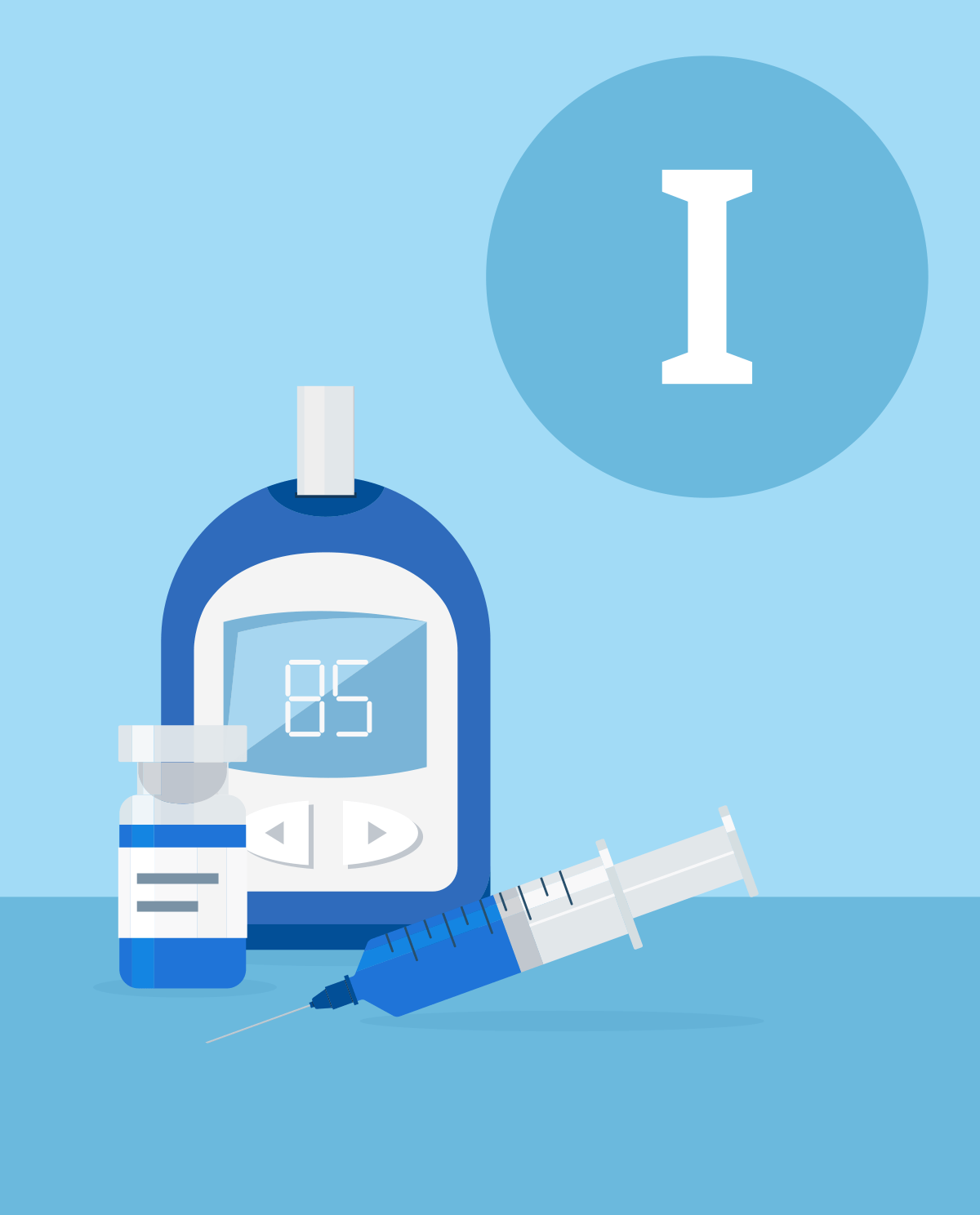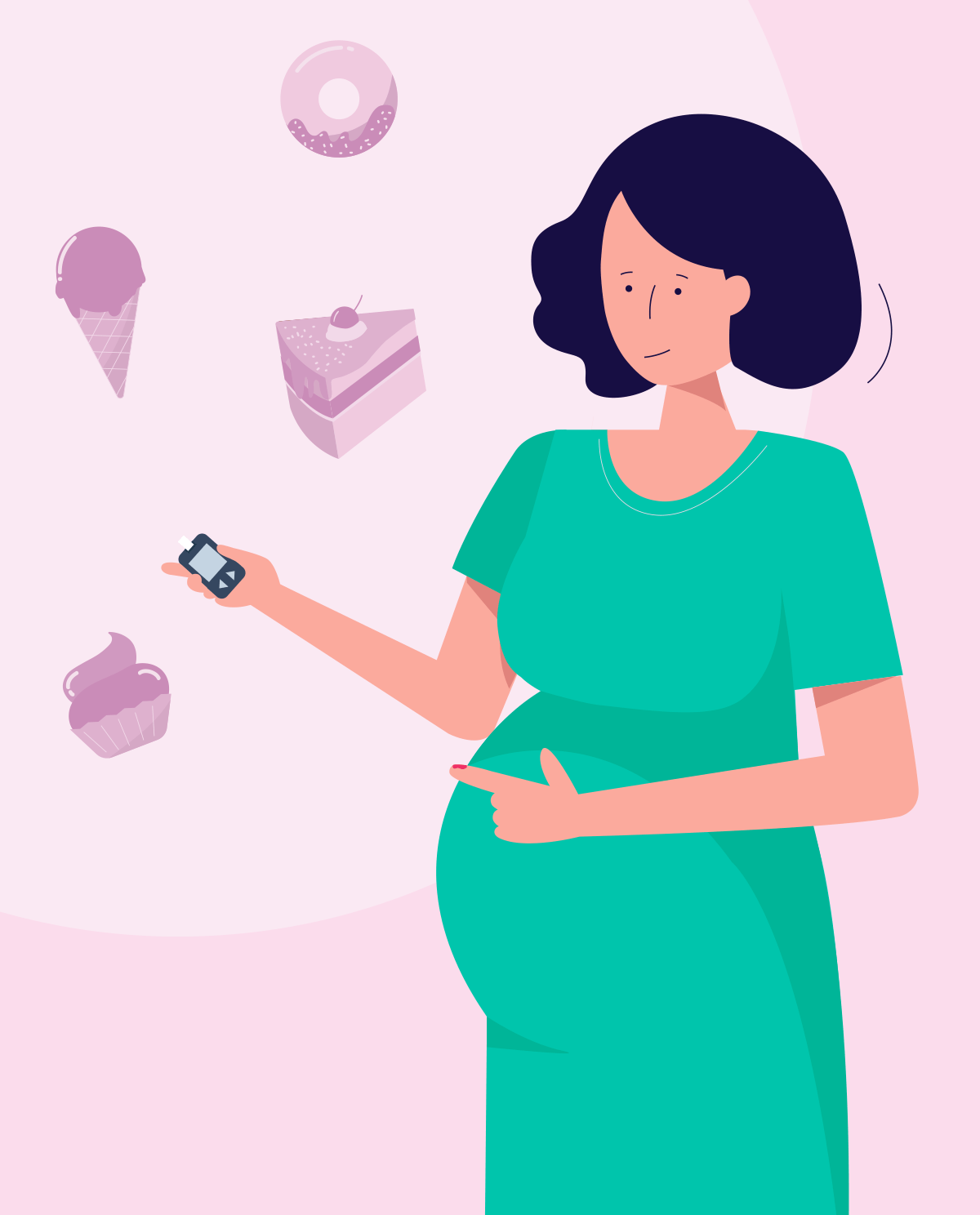Diabetes due to the continuous increase in morbidity is classified as a lifestyle disease. In a simplified way, we distinguish two basic types: type 1 diabetes (insulin dependent) and type 2 diabetes (non-insulin dependent). Type 1 diabetes accounts for approximately 10% of all types. It applies mainly to children and young adults (<30 years old). However, in 10-15% it can occur in older age. The onset of illness usually falls between 10 and 14 years of age. Studies carried out in the USA show that type 1 diabetes, despite the correct treatment, reduces the life expectancy by 3.6 years. Scottish results are even more drastic and indicate a shortened life expectancy of 11-13 years.
Causes
Type 1 diabetes is an autoimmune disease in which autoaggression occurs, i.e. the destruction of the patient's own cells. Autoantibodies produced by the immune system cause almost complete destruction of the pancreatic β cells responsible for the production of insulin. As a result, there is an absolute lack of it.
Although the cause of these antibodies has not yet been elucidated, the important role of genetic determinants has been proven. DNA tests have shown that the inheritance of susceptibility to type 1 diabetes depends on many different genes, mainly related to the HLA system. It is also believed that the initiation of autoimmunity may be due to being infected by certain viruses, which in a genetically predisposed person initiates changes at the cellular level leading to the disease.
Inheritance
Type 1 diabetes is not an inherited disease, however, the risk of falling ill in people with diabetes is significantly higher than in the population. The risk of developing type 1 diabetes in siblings of a sick person is 6%, and in identical twins it's 36%. This is directly related to the inheritance of genetic predisposition to autoimmune diseases, to which, alongside Hashimoto's disease and Graves' disease, diabetes should be type 1. It also means that patients with type 1 diabetes have a higher risk of developing other autoimmune diseases, as well as people with other autoimmune diseases. They are characterized by a greater predisposition to type 1 diabetes.
At the moment, there are no treatment methods that can prevent the onset of type 1 diabetes.
Symptoms
Typically, type 1 diabetes develops within 4-12 weeks of autoimmunity. The first symptoms compared to type 2 diabetes, occur suddenly and sometimes it can even be acidosis with a ketoacid.
Symptoms are likely to include:
- increased thirst (drinking from a few to a dozen liters of liquids daily),
- polyuria (more than 2,500 ml of urine per day),
- weight loss,
- drowsiness,
- weakness,
- lower immunity and tendency to infection,
- the presence of dehydration features, especially visible in the mucous membrane of the mouth and throat, which are usually highly congested and often covered with fibrous coating,
- inflammation of the external genitalia (vulva or glans and foreskin).
Diagnosis
The lack of insulin production by the pancreas leads to a significant increase in blood glucose. There may also be glucose and ketone bodies in the urine and other metabolic disorders. The basis for the diagnosis of diabetes is an increased level of glucose in the blood. Read more about the diagnosis of diabetes.
Treatment
The only treatment for type 1 diabetes is insulin therapy, which must be accompanied by the systematic use of an appropriate diabetic diet.
- Patients with newly diagnosed type 1 diabetes require treatment in a hospital setting. Initially, insulin is given as a continuous infusion into the vein using an external pump for drug administration. It is usually also necessary to supplement fluids and electrolytes. For this purpose, a drip with physiological NaCl solution with the addition of potassium is used.
- After achieving the correct glycemia, the insulin starts to be given under the skin. Typically, 4 subcutaneous insulin injections per day (sometimes more) are used.
- Insulin delivery is also possible with a personal insulin pump.
- In order to maintain a normal blood glucose level, the patient must be self-controlled, that is, to measure blood glucose using a glucometer. Read more about types of glucose meters and applications.
- Diabetics must use several types of insulin. Due to the time of administration, we distinguish between the basal insulin and the insulin used before the meal. However, taking into account the speed and duration of action, insulin can be divided into: fast-acting analogs, short-acting insulins, intermediate-acting insulin, long-acting analogues and insulin mixtures, i.e. preparations of rapid-acting insulin and long-acting insulin or short-acting insulin and about extended working hours.
-
In a healthy person, the pancreas always secretes small amounts of insulin into the blood and it is called primary secretion. In order to achieve a similar effect, basal insulin is used and it is an intermediate-acting human insulin or a long-acting analog. Insulin should be injected in the evening between 21.30 and 23.00. Sometimes an additional injection is recommended before breakfast (in addition to pre-insulin insulin).
Long-acting analogues stay in the blood for up to 24 hours and do not show peaks, therefore, if used, there is a small risk of hypoglycaemia.
-
Human insulin with intermediate duration of action works 16-18 hours, which, unfortunately, can sometimes lead to morning high blood glucose, i.e. dawn phenomenon. In addition, the peak effect of this insulin occurs after 6-10 hours after the injection, which may cause hypoglycemia at night, from 24.00 to 3.30.
-
Insulin administered before meals is supposed to reproduce insulin secretion by the pancreas in connection with a meal. Before meals, use short-acting human insulin or a fast acting analogue.
Fast acting insulin analogues work up to 3 or 5 hours, depending on the preparation used.
-
Short-acting human insulin is used in people with a stabilized lifestyle, and the injection is made half an hour before the main meals: breakfast, lunch and dinner. This insulin works up to 6-8 hours, so in addition to the main meals, patients should also eat snacks: a second breakfast, afternoon tea and sometimes also a second dinner.
Diet
Diet in type 1 diabetes is based on carbohydrate exchangers. 10g of digestible carbohydrates is 1 WW, or 1 carbohydrate exchanger.
Each patient must accurately calculate the amount of carbohydrates consumed in each meal. This is necessary for precise insulin dosing. Counting carbohydrates is facilitated by tables available in bookshops and the Internet. There are also special computer programs and applications to help you count carbohydrate exchangers. You can also buy a food scale, which, in addition to the basic function of weighing products, shows the amount of carbohydrates, proteins and fats contained in a given product as well as the number of calories.
The patient using a personal insulin pump in addition to counting the amount of carbohydrates should also count protein-fat exchangers.
- Interna Szczeklika 2018 Handbook of Internal Diseases, Authors: Piotr Gajewski, Andrzej Szczeklik Publisher: Medycyna Praktyczna
- Collective work, Carbohydrate metabolism disorders [in:] Andrzej Wojtczak (ed.), Internal diseases, ed. II amended, Warsaw: Medical Publishing House PZWL, 1995
- http://www.mp.pl
- https://www.mp.pl/pacjent/
- https://www.mp.pl/cukrzyca/cukrzyca/typ1/65948,cukrzyca-typu1
- http://ocukrzycy.pl/rodzaje-cukrzycy/cukrzyca-typu-1/
- https://www.mp.pl/cukrzyca/cukrzyca/typ1/65994,leczenie-cukrzycy-typu-1
- https://diabdis.com/blog/rodzaje-insulin/








